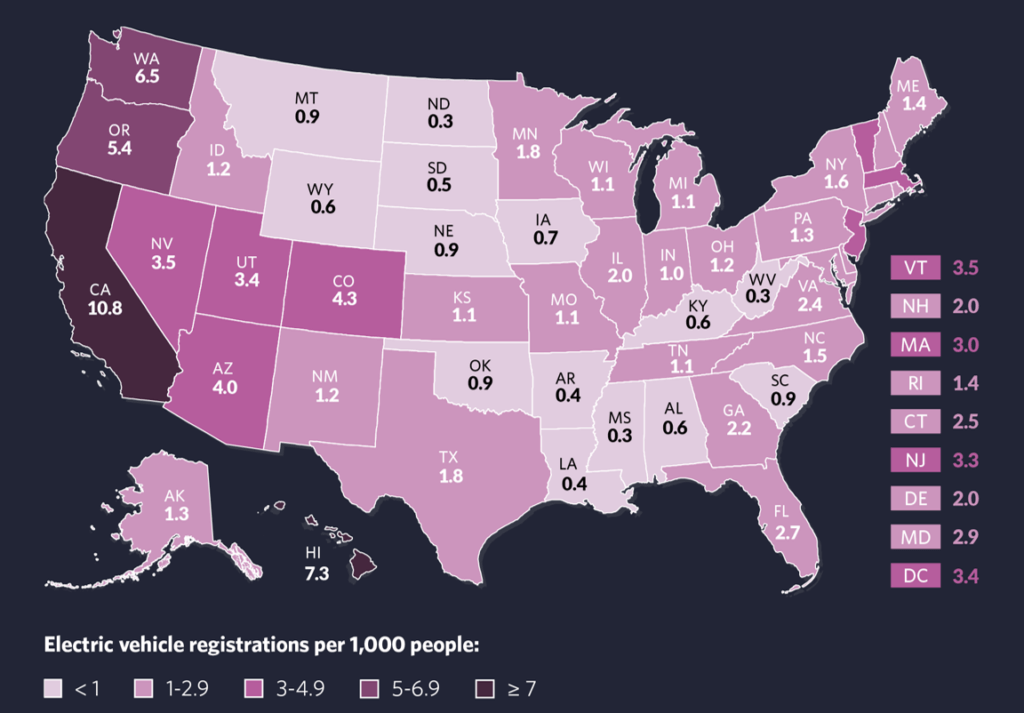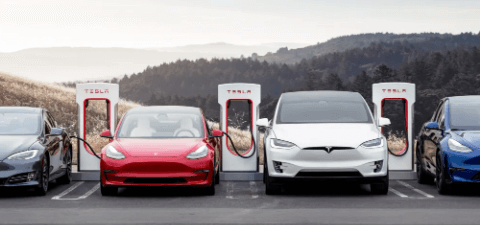In August 2022, California Air Resources Board passed the Advanced Clean Cars II rule that fast-tracks the state to zero-emission transportation. This new rule establishes a roadmap that gradually ushers in a 100% emission-free sale of motor vehicles by 2035.
While many states and countries have set goals and targets to phase out the sale of fossil-fueled vehicles, California has the most aggressive regulation. The plans may be ambitious but are achievable.
California’s Electric Car Goals
California aims to have 5 million zero-emission automobiles on the road by 2030. These goals align with the state’s broader efforts to decrease greenhouse gas emissions and combat climate change. But how does California achieve these goals?
The Zero Emission Vehicle (ZEV) program requires automakers to sell a certain number of electric and other zero-emission vehicles in the state each year. The state also offers a range of incentives to encourage people to buy electric cars, including rebates, tax credits, and reduced registration fees.
In addition, California has invested heavily in building the infrastructure needed to support electric cars, such as charging stations and battery-swapping stations.
But establishing the regulations is one thing. How does California plan to increase access to zero-emission vehicles?
For the fiscal year 2022-23, the California Legislature passed $2.7 billion and another $3.9 billion to be spread over three years. This investment is for clean mobility options for communities facing significant economic and environmental challenges and ZEV adoption. They put the money where the mouth is!
The Future of Electric Cars in California
California is well-positioned to lead the way in the transition to zero-emission transportation.
To ensure that electric cars become more affordable and accessible to a broader range of drivers, California implemented a range of programs and initiatives to reduce the cost of electric vehicles.
The Clean Vehicle Rebate Project (CVRP) provides financial incentives for purchasing or leasing new electric vehicles. Income-qualified drivers get up to $7,000 CVRP to buy or lease a ZEV.
The California Air Resources Board (CARB) also offers incentives for low-income drivers to purchase electric vehicles.
On the other hand, the Clean Cars 4 All initiative is for low-income car owners and provides up to $9,500 to swap older vehicles with cleaner options. Another one for low-income car buyers is the Clean Vehicle Assistance Program which provides down-payment assistance of as much as $5,000.
California has also significantly invested in developing new technologies and infrastructure to support electric cars. The state is home to many of the world’s leading electric vehicle manufacturers, including Tesla, which has its headquarters in the state.
California has invested heavily in building the charging infrastructure needed to support electric cars, with over 41,000 charging stations installed across the state.

The future of electric cars in California is also likely to be shaped by broader trends in the transportation industry. For example, the rise of shared mobility services, such as ride-hailing and car-sharing, could provide new opportunities for electric cars to become more widely used.
As more people opt for shared mobility services instead of owning their own cars, there may be less of a need for personal vehicles with long driving ranges, which could make electric cars more attractive to a broader range of consumers.
Also, as more renewable energy sources, such as wind and solar power, are integrated into the electricity grid, electric cars will become even more environmentally friendly. This is because they will be powered by clean energy.
Takeaway
The future of electric cars in California is bright, with ambitious goals for adopting zero-emission vehicles and significant investments in infrastructure and incentives. While challenges still need to be overcome, such as the high cost of electric cars and the need for more charging infrastructure, California is well-positioned to lead the way in the transition to zero-emission transportation.
As more individuals recognize the benefits of electric cars and new technologies and infrastructure is developed to support them, electric vehicles will likely become an increasingly popular option for drivers in California and worldwide. With the state’s strong commitment to reducing greenhouse gas emissions and combating climate change, electric cars are poised to play a central role in California’s transportation system in the years ahead.
Andrew Gichaga
An automotive writer. A wordsmith and a gearhead with a passion for cars that spans decades, I find immense pleasure in creating and consuming content about all things automotive.
Whether I’m writing about the latest tech, exploring the history of classic models, or sharing my own experiences behind the wheel, I strive to craft engaging, informative pieces that inspire and inform.
This article is sponsored by OC Auto Matrix – Costa Mesa Used Cars









